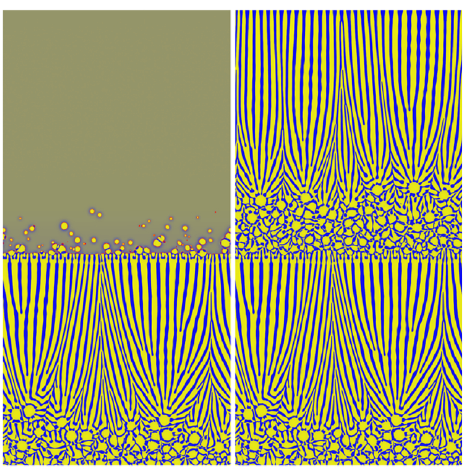Ultrafine Fe-Fe2Ti eutectics by directed energy deposition: Insights into microstructure formation based on experimental techniques and phase field modelling

1Institute for Solid State Physics and Optics, Wigner Research Centre for Physics, P.O. Box 49, Budapest H-1525, Hungary
We investigated the Fe-Fe2Ti eutectic microstructure obtained by Directed Energy Deposition (DED) with a hypereutectic composition of Fe-17.6 at.% Ti. Ultrafine lamellar spacings as low as 200 nm were achieved, features which otherwise can only be obtained in thin specimens, e.g. by suction casting. However, at interlayer boundaries (ILBs) a globular morphology of the primary Fe2Ti phase is observed with halos of the Fe phase. For the given DED conditions the crystalline structure is thus discontinuous across the ILBs. Both 2D and 3D analysis methods were used to quantify the microstructure, including high resolution synchrotron holographic X-ray computed tomography (HXCT). The generic behaviour of eutectic systems under conditions that qualitatively correspond to those of laser additive manufacturing was explored by phase-field modelling for selected nucleation scenarios and alloy compositions spanning from eutectic to hyper-eutectic. While providing valuable insights into microstructure formation, the simulations point out the need to further deepen our understanding about melting under additive manufacturing conditions in order to implement suitable nucleation and / or free growth models. The simulations also show that globular ILBs can be prevented when using exactly eutectic alloy compositions.
